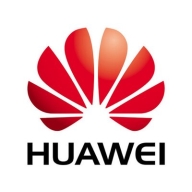

Huawei Wireless and Aruba Instant On Access Points are competitors in the wireless networking category. Huawei Wireless has the upper hand in price advantage and feature set variety, while Aruba excels in user-friendly management and coverage.
Features: Huawei Wireless offers seamless roaming, high performance, and IoT integration, providing strong security and cloud options. Its affordability and ease of setup are notable. Aruba Instant On is distinguished for its excellent coverage, easy management, and simplicity in setup, which suits small and medium sites well.
Room for Improvement: Huawei Wireless needs better support, more focus on SMB products, and improved third-party integration, alongside resolving initial setup complexity. Aruba Instant On could enhance integration with other systems, improve monitoring capabilities, and expand its cloud management features for better scalability in high-density environments.
Ease of Deployment and Customer Service: Huawei Wireless offers straightforward deployment with options for both on-premises and cloud, though support speed and documentation could be improved. Aruba Instant On is user-friendly and manageable, designed even for non-technical users, but suffers from slower support response times. Huawei tends to focus more on on-premises deployment compared to Aruba's balanced approach.
Pricing and ROI: Huawei Wireless is praised for its competitive pricing and strong ROI, often being more affordable than competitors like Cisco and Aruba, with reasonable licensing structures. Aruba Instant On offers cost-effective pricing with straightforward structures and no extra licensing fees, appealing for budget-conscious users. While both offer good ROI, Huawei is noted for its price advantage, whereas Aruba stresses cost predictability.


Ingredients for success.
Fast 802.11ac Wave 2, secure employee and guest access, easy-to-use web, and mobile app management.
Say yes to secure Wi-Fi access.
Pre-built access control lists (ACLs) and built-in firewall in the access points prevent malicious traffic from entering your network – we call it “hassle-free” security.
Never drop an important call.
With Instant On, voice and video business applications are automatically prioritized, so you stay connected with your peers.
We monitor all Wireless LAN reviews to prevent fraudulent reviews and keep review quality high. We do not post reviews by company employees or direct competitors. We validate each review for authenticity via cross-reference with LinkedIn, and personal follow-up with the reviewer when necessary.